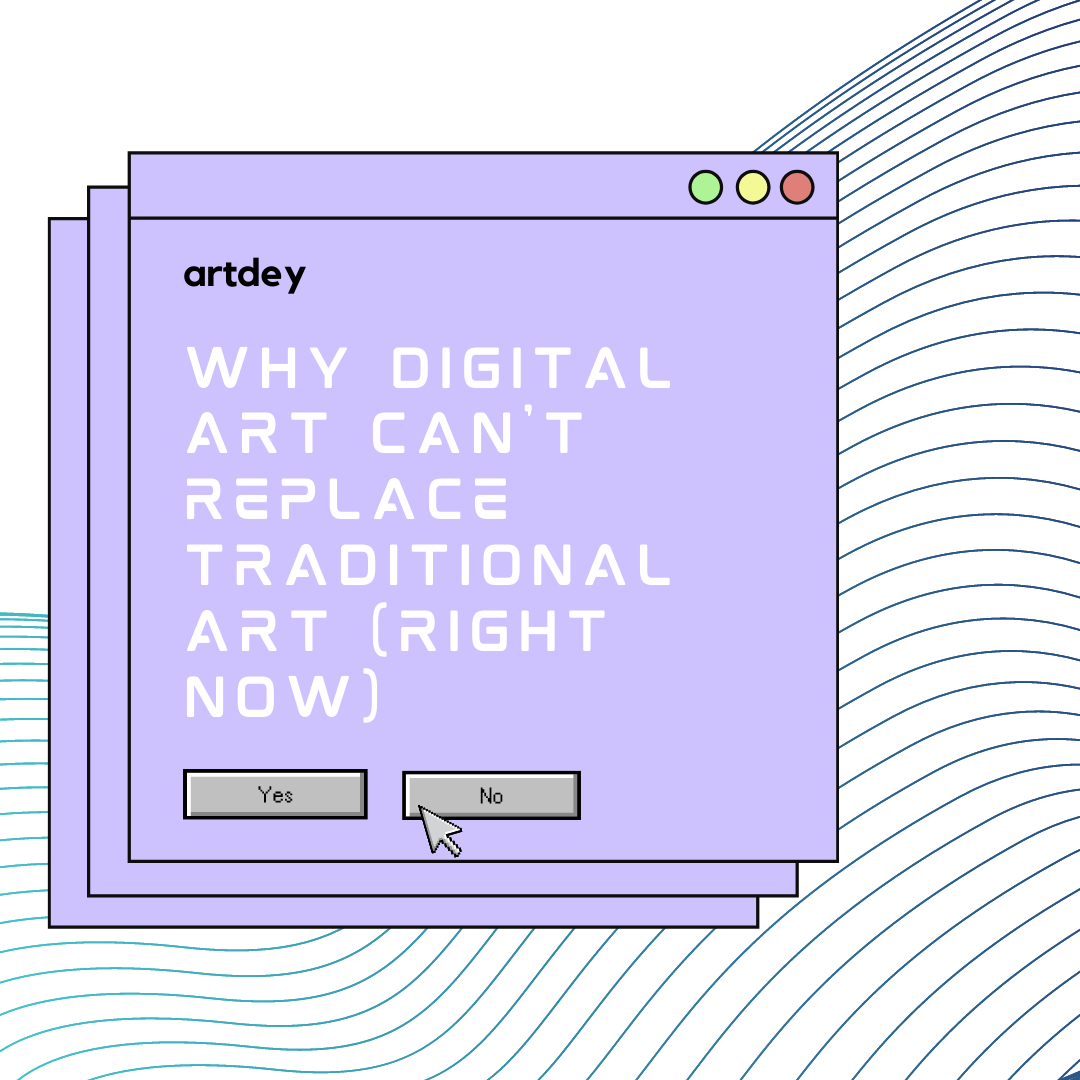
Why Digital Art Cannot Replace Traditional Art (right now)
Share
Digital art is impressive. It's the perfect medium for expressing your creativity and lets you share your work with the world in a way that traditional media can't match. But digital art has yet to replace conventional forms of visual expression. Some artists see them as two entirely different kinds of art! Read on to learn more about how digital vs. traditional arts interact with each other - and why we think both are important for our society today.
People still appreciate paintings, sculptures, and other forms of traditional art as tangible things to put on their walls and look at.
Traditional art is a way for people to express themselves, and it's still essential to physically touch your work of art. People want to own things they can hold and look at.
This is not just an aesthetic thing: owning an original painting or sculpture gives you bragging rights—and it can also make you feel good about yourself as an artist (or at least more cultured).
People who buy traditional art also tend to be more wealthy than others; having money allows them access to artists who make more expensive pieces, which means they're able to afford the upkeep of those pieces over time, as well as their collections of similar works by other artists.
Artists skilled in traditional and digital arts think the two mediums require very different skill sets.
Traditional and digital art are very different. The first thing to note is that conventional artists require more space and equipment than digital artists. Digital skills can be easily shared online, but they need time and space to create the final product to achieve the desired effect.
Traditional visual art requires a lot of room for materials, such as canvases or paints; digital art only requires a little space because it's all done on computers or tablets instead of traditional canvases.
Digital art is not going to replace traditional art anytime soon. Artists who work in both mediums say that the two require very different skill sets, and they're right—for now. The nature of physical media requires more skill than the nature of digital visual art does - for now. But as technology advances, we can expect this gap between traditional and digital media to narrow over time and eventually merge into one artistic genre.